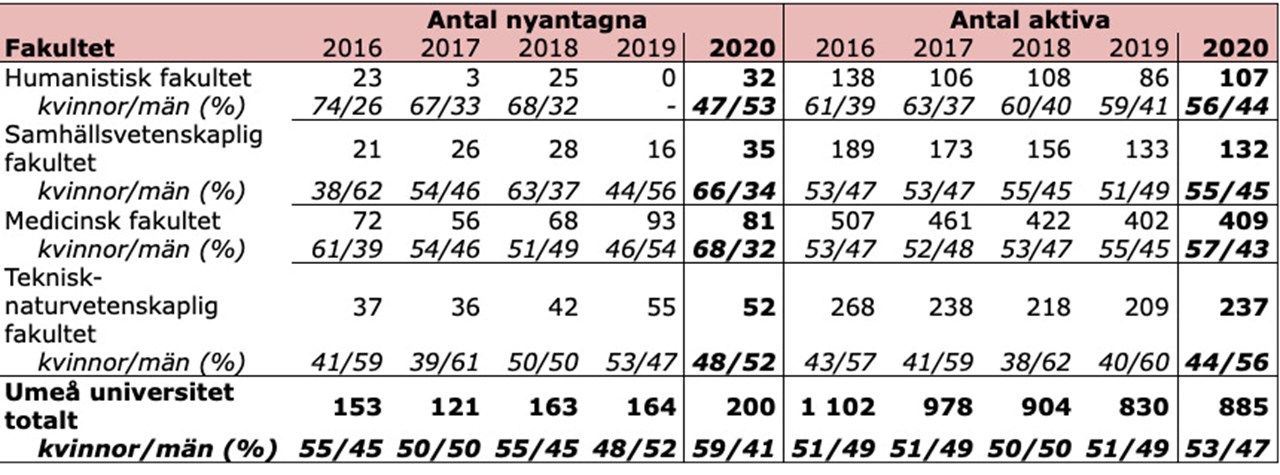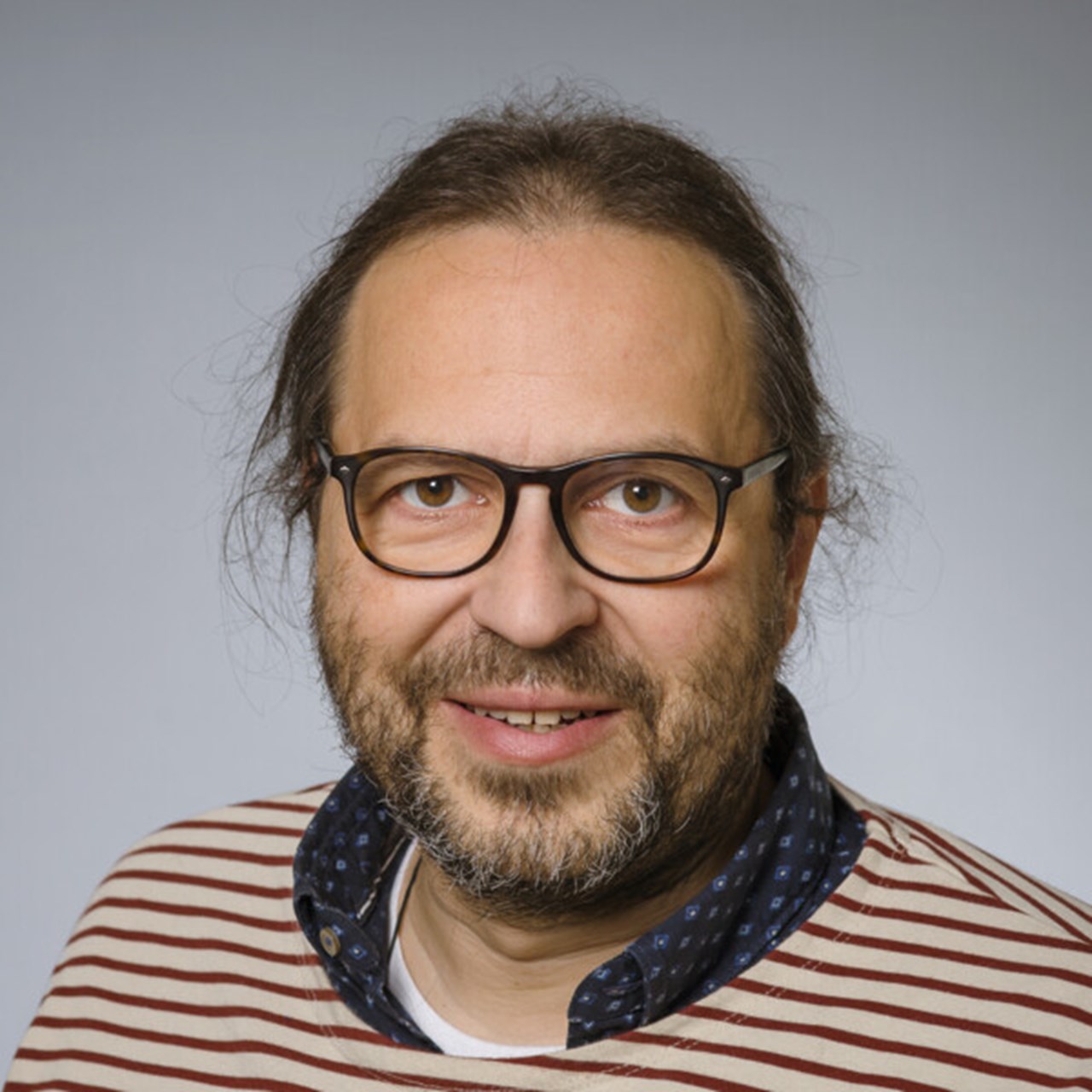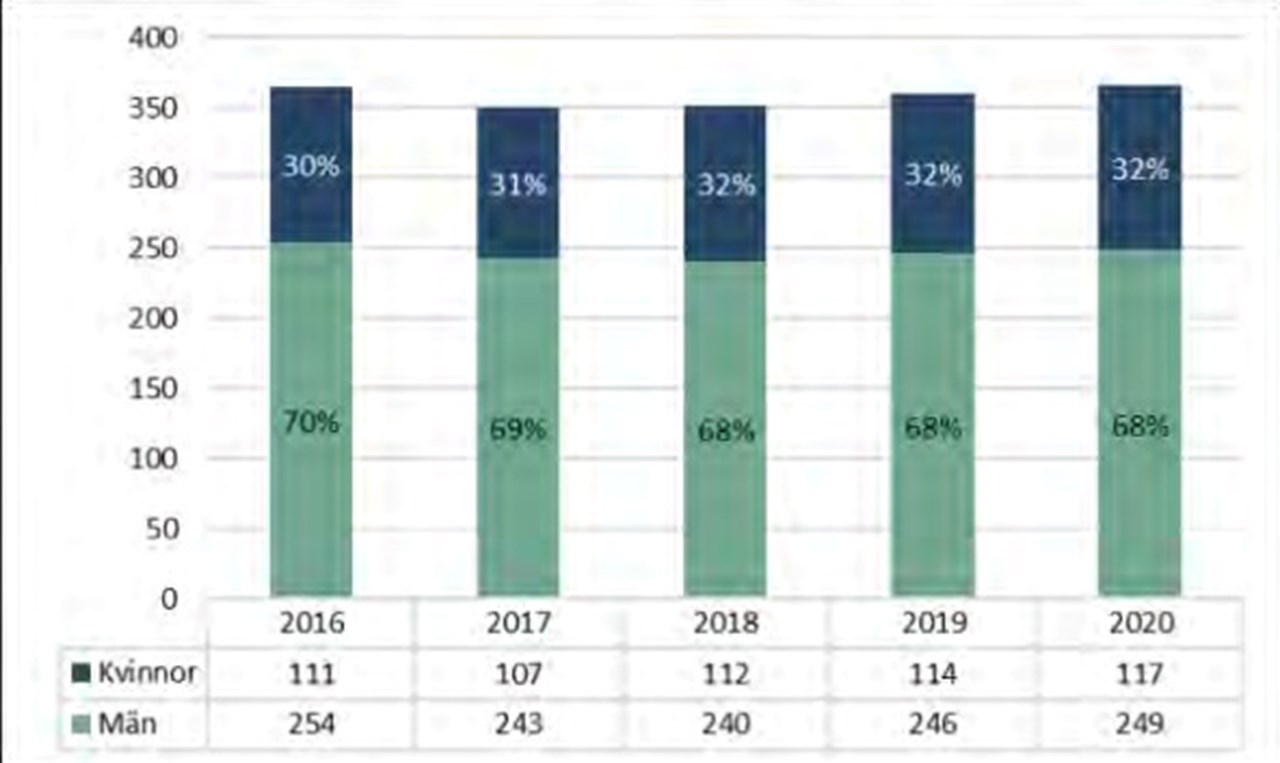The number of women increases
The number of women professors has increased for three consecutive years and has now reached 117. Among recruited/promoted professors in 2020, the proportion is 43 per cent women. The number of women in total has not changed (32 per cent).
This is the gender distribution among newly admitted doctoral students at the various faculties (women/men in %):
Faculty of Arts: 47/53
Faculty of Social Sciences: 66/34
Faculty of Medicine: 68/32
Faculty of Science and Technology: 48/52
Total: 59/41
This is the gender distribution among active doctoral students at the various faculties (women/men in %):
Faculty of Arts: 56/44
Faculty of Social Sciences: 55/45
Faculty of Medicine: 57/63
Faculty of Science and Technology: 44/56
Total: 53/47





